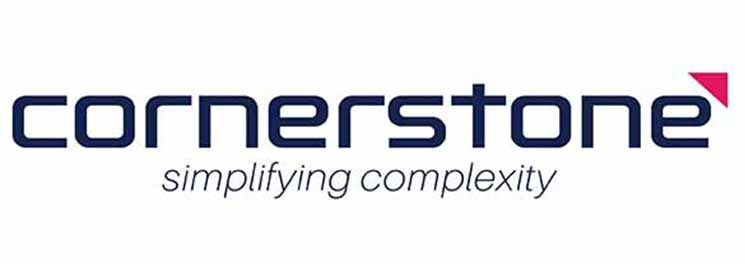
Supply chain maturity: Is more always better?
It’s time for leaders to get real about the supply chain’s journey from bad, to good, to great.
We’ve been taking a deep dive into some of the real-world supply chain challenges currently facing leaders across many industries, including supply chains that are suffering from a lack of investment, and transformation projects that become bogged down in heavy customisation.
Before committing to any investment or transformation project, it’s essential that leaders familiarise themselves with the concept of supply chain maturity. This will allow you to assess the current state or level of maturity of your supply chain and then set realistic expectations of where you can expect to be, and by when.
It might surprise you to hear that when it comes to supply chain maturity, more doesn’t necessarily mean better. We’ll explore why below.
Models of supply chain maturity
There are several models we use to describe supply chain maturity. Gartner’s is one of the best known and happens to be our preferred model. It describes five stages of maturity:
Amazon and Apple are great examples of companies who reach Stage Five on this scale. Each has a well-oiled logistics ecosystem that is the envy of operational leaders around the world.
Meanwhile, we won’t name any names for Stage One companies, but there are many culprits. If you’re dealing with a Franken-System – a monstrous mishmash of organisational planning systems that don’t really “talk” to each other, usually featuring multiple Excel spreadsheets – that’s a pretty good indication that you might be sitting in Stage One.
Why does it matter where you are on the maturity scale?
So should we all be aspiring to reach Stage Five, the gold standard for supply chain and logistics? Surprisingly, for the majority of companies, the answer is likely to be no.
The purpose of the public maturity scale is not to shame you into immediate action and rapid transformation. It’s to help leaders map out achievable transformation projects, which are aligned with the broader strategic direction and vision – all while taking into account the current state and your organisation’s capabilities.
If you’re coming from a low maturity base, you have an opportunity to undertake the transformation in stages. For many caught in Stage One, a reasonable plan might be to achieve Stage Two in six to twelve months, and Stage Three in the year beyond that. While each situation is unique, in general we find these timeframes to be reasonable when you take into consideration variables such as adoption rates and other factors related to organisational change management strategy (that is, people, process and tools).
Then it will be time to pause and reassess things in relation to the current state and priorities. In some cases, further major transformational work may be required. In many cases, it won’t be. However, it’s critical that you evaluate the majority of your supply chain regularly so you can undertake continuous improvement activities – hopefully avoiding the need for large-scale transformational projects further down the track.
In other words, take a deep breath – your supply chain doesn’t need to rival that of Apple or Amazon. In our experience, you’ll get more sustained results from your transformation if your ambition and your capabilities are aligned. Stage Five supply chains might be best practice, but they are also a large investment to build and maintain. Furthermore, they are only likely to deliver substantial rewards if you’re operating at a similar global scale to the likes of Amazon or Apple.
Culture challenges and the role of leaders
In our experience, supply chain maturity challenges are nearly always cultural in origin. A well-executed change strategy with appropriate planning for the people, processes and technology that will make up the change is going to be essential to the success of any supply chain transformation project.
Before project kick-off, leaders also have an important role to play in creating the right environment for change – particularly when the current maturity level is low. You may find the three strategies useful:
- Don’t let perfect become the enemy of good or great. If the people around you are dreaming big with aspirations of Stage Five supply chain leadership, it’s best to manage those expectations early on with some targeted conversations around current state and expected maturity.
Similarly, once the project is in the requirements-gathering stage, introduce a strong focus on configuration rather than customisation. We’ve seen heavy customisation sink more than one supply chain transformation project. - Educate and align on supply chain maturity at the leadership level. If an organisation’s leadership team is not aligned on direction and outcomes, any transformation project is going to be doomed from the start. In the supply chain context, make sure the conversation is consistent in terms of what good looks like, what benefits the transformation is going to deliver and by when, and how it is aligned to the broader corporate strategy. It also doesn’t hurt to be transparent about what is not being delivered (i.e. Stage Four or Five supply chain excellence).
- Be prepared for resistance. Even when the overall outcome of a transformation project is going to be positive, there will be people in your organisation who resist it. The resistance will be even greater if you are coming from a low maturity base and you have multiple owners of disparate parts of the Franken-System.
Read more here about the work you can do to prepare your culture for change: Building a change culture for difficult times.
Finally, don’t shy away from seeking external support if you’re struggling to get your transformation project off the ground due to low maturity. The right transformation partner will provide an external perspective of your supply chain, and help you create a clear understanding of what good looks like for your organisation in the context of your current maturity – and how you’re going to get there.
We are enablers of change and transformation in Supply Chain, Information Management, Financial Planning & Analytics, Management Consulting, Project Management, and Managed Application Services. Contact us to find out more about how we work with your teams or call 1300 841 048.





